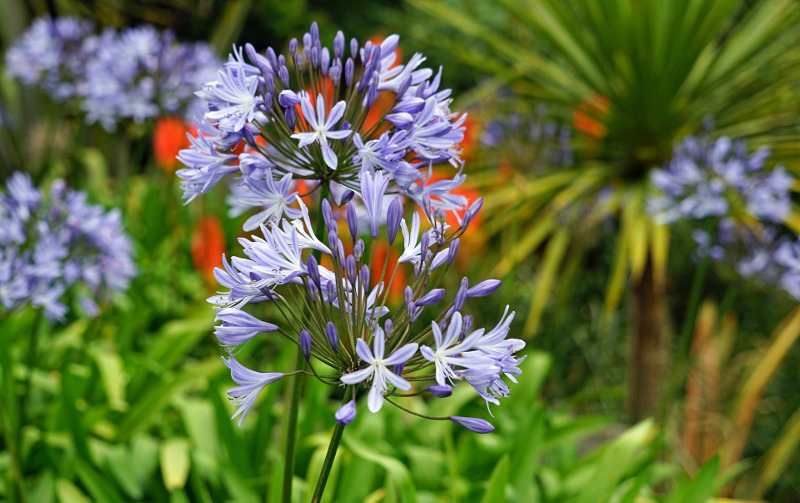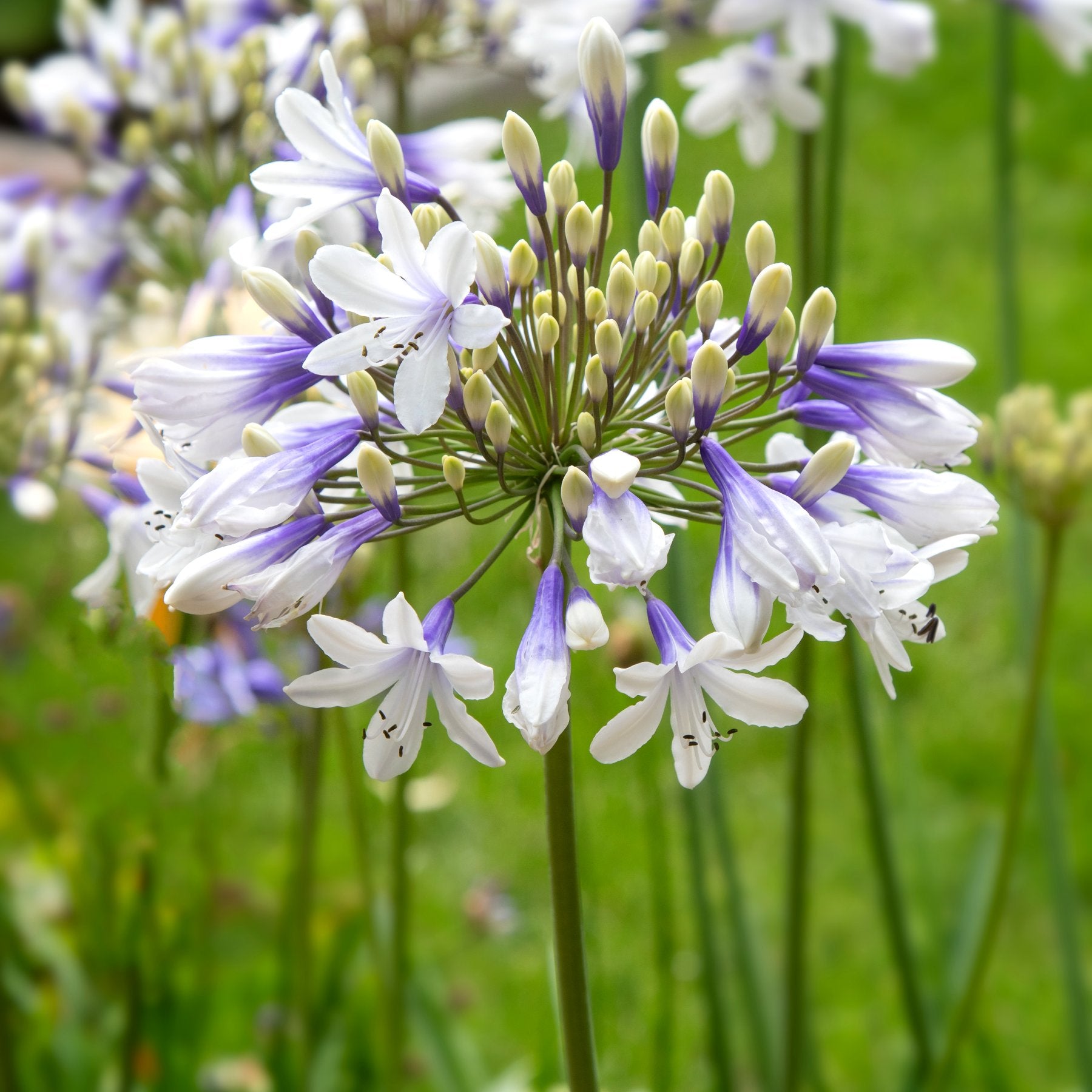Agapanthus Care Tips for Lush and Vibrant Flowers
Wiki Article
Mastering the Art of Agapanthus Care: Essential Steps for Healthy And Balanced Development and Dynamic Blossoms
In the world of cultivation, the growing of agapanthus stands as a gratifying undertaking for those that look for to support these sophisticated flowering plants. With their striking blooms and elegant vegetation, agapanthus has actually recorded the attention of gardeners worldwide. Nonetheless, accomplishing optimum growth and vibrant blooms calls for a nuanced approach that incorporates numerous essential actions. From choosing the ideal variety to grasping trimming methods, the trip towards cultivating growing agapanthus plants is diverse and holds the key to opening the complete potential of these botanical gems.
Picking the Right Agapanthus Variety

When choosing the appropriate Agapanthus variety for your yard, consider elements such as climate viability, bloom shade, and development practice. Agapanthus, commonly known as Lily of the Nile or African lily, comes in a variety of colors ranging from shades of blue and purple to white. Pick a blossom color that matches your existing yard scheme to produce a harmonious landscape. Furthermore, consider the climate in your area to guarantee the Agapanthus selection you pick can flourish in your specific problems. Some selections are more forgiving of chilly temperature levels, while others choose warmer environments. Comprehending the development routine of different Agapanthus ranges is vital for correct positioning within your yard. Some varieties have a clumping development routine, perfect for containers or borders, while others have a more spreading nature, ideal for ground cover or mass growings. By carefully examining these variables, you can choose the perfect Agapanthus variety to enhance the beauty of your garden.
Suitable Growing Problems
Taking into consideration the optimum ecological requirements is necessary for effective Agapanthus cultivation. Agapanthus prospers in well-draining soil with a somewhat acidic to neutral pH level. When planting, select a place that gets complete sunshine to partial color. In hotter environments, providing some afternoon color can prevent scorching of the fallen leaves. Agapanthus plants are delicate to chilly temperature levels and should be safeguarded from frost throughout cold weather.To guarantee healthy development and lively flowers, plant Agapanthus bulbs at a deepness of about 2-4 inches and area them 8-12 inches apart. Mulching around the base of the plants assists retain dampness and reduces weed development.
Watering and Fertilizing Tips
Preserving proper dampness degrees and giving crucial nutrients are essential components in the care regimen for Agapanthus plants. When it comes to watering Agapanthus, it is important to strike an equilibrium. These plants prefer constantly moist dirt yet are vulnerable to root rot if overwatered.Feeding Agapanthus is necessary for promoting healthy growth and prolific flowers. Use a balanced fertilizer, such as a 10-10-10 formula, in the very early springtime as new growth emerges. By following these watering and feeding tips, you can guarantee your Agapanthus plants flourish and produce lively, lasting blooms.
Trimming Strategies for Agapanthus
Trimming Agapanthus plants at the appropriate times and with correct techniques is critical for preserving their wellness and advertising optimal development and flowering. The excellent time to prune Agapanthus is in late winter months or early springtime before new development emerges. Beginning by getting rid page of any kind of yellowing or dead leaves near the base of the plant. Cut them as short as feasible without harming the arising shoots.Deadheading invested flowers can likewise reroute the plant's energy into creating more blooms instead than establishing seeds. If you desire to gather seeds for proliferation, leave some blossoms to fully grown and completely dry on the plant.
Remember to utilize clean, sharp devices to make specific cuts and decrease the risk of presenting diseases. Agapanthus. Routine pruning will certainly aid keep your Agapanthus looking healthy and cool while guaranteeing a bountiful display of attractive flowers
Taking Care Of Common Pests and Illness
After making sure correct trimming strategies for Agapanthus, it is vital to deal with typical pests and conditions that can influence the health and wellness and vitality of these plants. One common pest that impacts Agapanthus is the Agapanthus gall midget.An additional common concern is fungal leaf spot, which provides as dark lesions on the fallen leaves. To avoid fungal diseases, ensure great web link air circulation around the plants, prevent overhead watering, and get rid of any kind of contaminated leaves without delay. In addition, Agapanthus plants can experience origin rot if they are planted in improperly draining soil. To stop this, plant Agapanthus in well-draining soil and prevent overwatering. By being cautious and taking timely activity versus insects and illness, you can help your Agapanthus plants prosper and create vivid flowers.

Final Thought
To conclude, grasping the art of agapanthus care involves selecting the ideal range, offering suitable planting conditions, you can find out more proper watering and feeding, suitable trimming methods, and attending to typical parasites and conditions. By adhering to these crucial steps, you can make certain healthy and balanced development and dynamic blossoms for your agapanthus plants. Remember to regularly check and maintain your plants to advertise their total health and long life.To make certain healthy and balanced development and vivid flowers, plant Agapanthus bulbs at a depth of concerning 2-4 inches and room them 8-12 inches apart. By following these watering and fertilizing pointers, you can ensure your Agapanthus plants flourish and create vivid, resilient blossoms.
One common parasite that influences Agapanthus is the Agapanthus gall midget. Additionally, Agapanthus plants can endure from origin rot if they are grown in badly draining dirt. By complying with these necessary steps, you can ensure healthy and balanced growth and lively flowers for your agapanthus plants.
Report this wiki page